In honor of the year of the sheep (a.k.a. the year of the goat), which began last week (February 19), we bring you G. Martin’s Natural History Cards from the 1820s.
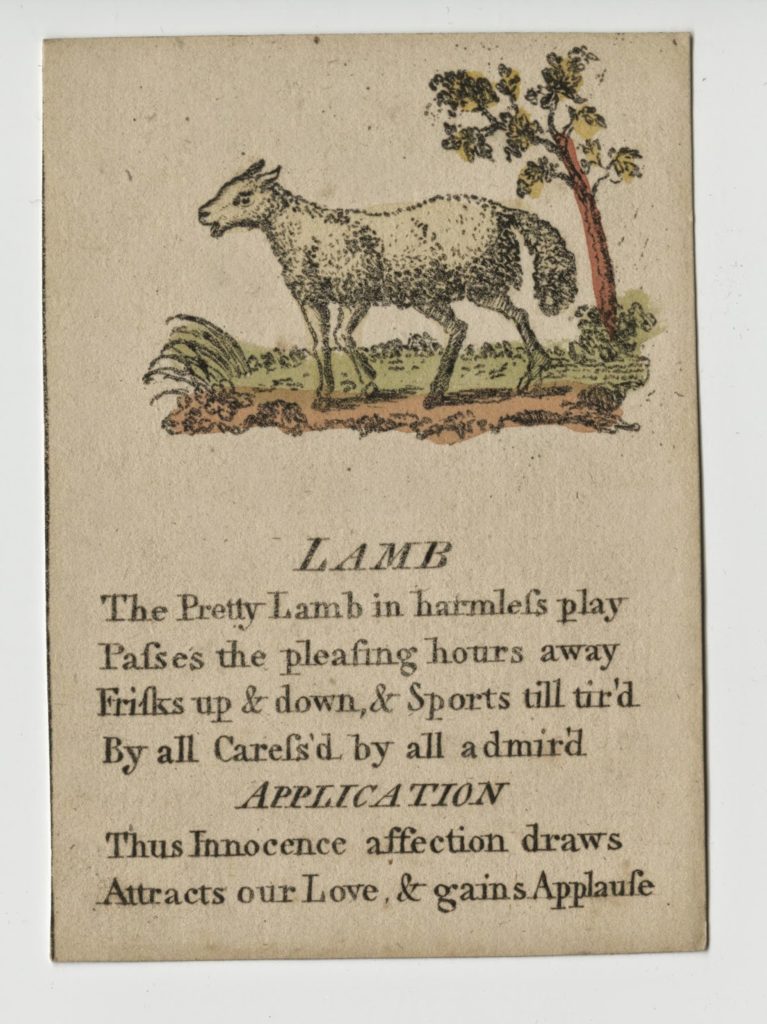 |
| Natural History Cards. Beasts. London, G. Martin, [ca. 1825]. EL3 .A1n 825a. Rosenbach of the Free Library of Philadelphia. |
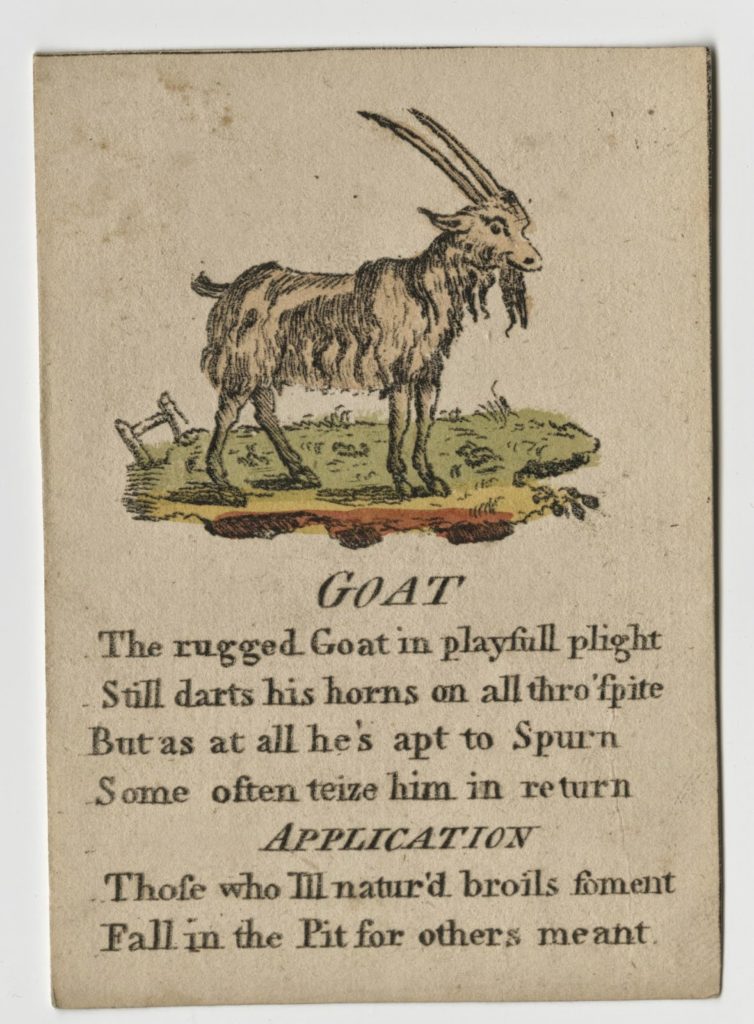 |
| Natural History Cards. Beasts. London, G. Martin, [ca. 1825]. EL3 .A1n 825a. Rosenbach of the Free Library of Philadelphia. |
We have two different sets of the Martin cards: beasts and birds (of which we have two copies with slightly different envelopes). The images for both are copper-plate engravings, which as their envelope states, are “beautifully coloured.”
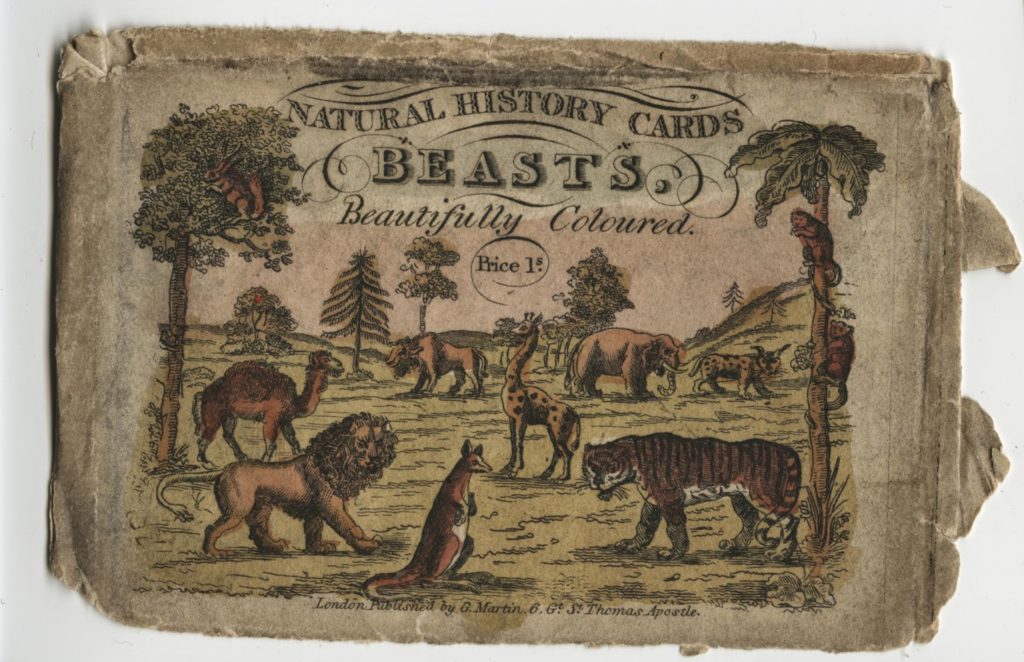 |
| Natural History Cards. Beasts. London, G. Martin, [ca. 1825]. EL3 .A1n 825a. Rosenbach of the Free Library of Philadelphia. |
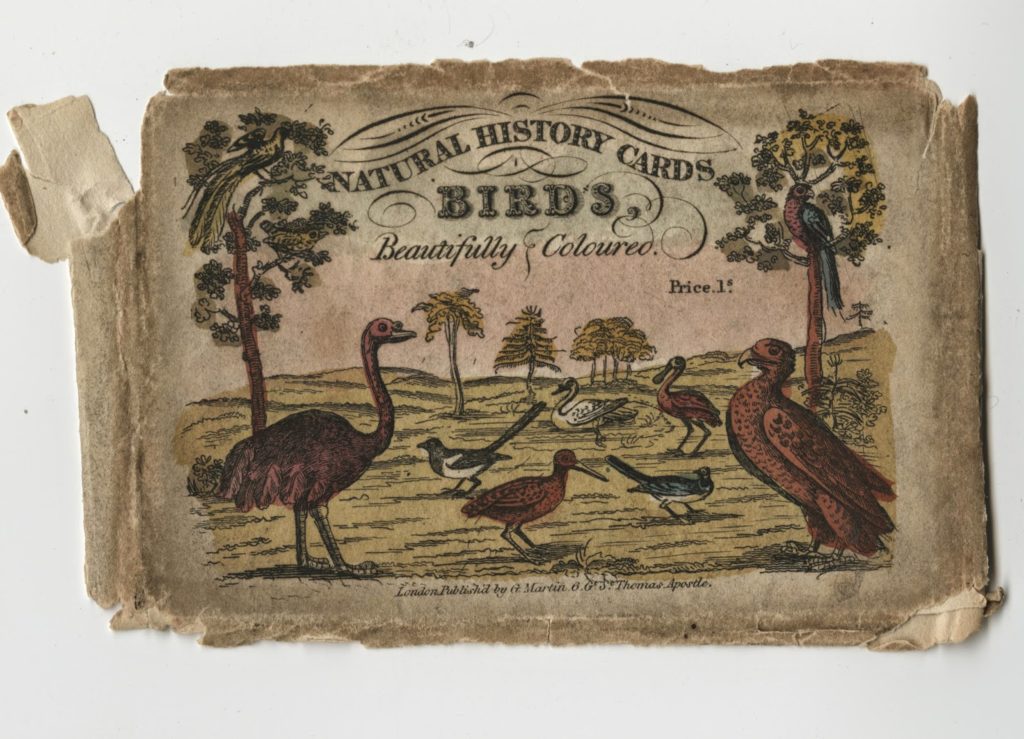 |
| Natural History Cards. Birds. London, G. Martin, [ca. 1825]. EL3 .A1n 825b. Rosenbach of the Free Library of Philadelphia. |
One of the Martin sets explains that the cards are for the instruction and entertainment of youth. They are as much moral lesson as natural history; each card contains four lines describing the character and behavior of the animal, followed by an explicit two line moral. Such kinds of educational toys had come into fashion in the late 18th and early 19th century; these particular cards are the same as those marketed by W. Tringham as far back as 1780. By 1814, Sir Walter Scott complained in the first Waverly novel that:
[A]n age in which children are taught the driest doctrines by the insinuating method of instructive games, has little reason to dread the consequences of study being rendered too serious or severe. The history of England is now reduced to a game at cards, the problems of mathematics to puzzles and riddles, and the doctrines of arithmetic may, we are assured, be sufficiently acquired by spending a few hours a-week at a new and complicated edition of the Royal Game of the Goose. There wants but one step further, and the Creed and Ten Commandments may be taught in the same manner, without the necessity of the grave face, deliberate tone of recital, and devout attention hitherto exacted from the well-governed childhood of this realm. It may, in the mean time, be subject of serious consideration, whether those who are accustomed only to acquire instruction through the medium of amusement, may not be brought to reject that which approaches under the aspect of study; whether those who learn history by the cards, may not be led to prefer the means to the end; and whether, were we to teach religion in the way of sport, our pupils might not thereby be gradually induced to make sport of their religion.
Despite Scott’s (and other’s) concerns, instructional games in general and natural history cards in particular remained popular throughout the 19th century. An 1856 Sunday School Union publication advertised Natural History Cards “for infant-schools” at a price of 20 cents for eight cards, and in 1900 a newspaper from New Zealand advertised a set of “Holloway’s Natural History cards” which both promoted Holloway’s medicines and taught about birds and animals.
 |
| Youth’s Penny Gazette. August 27, 1857. Google Books. |
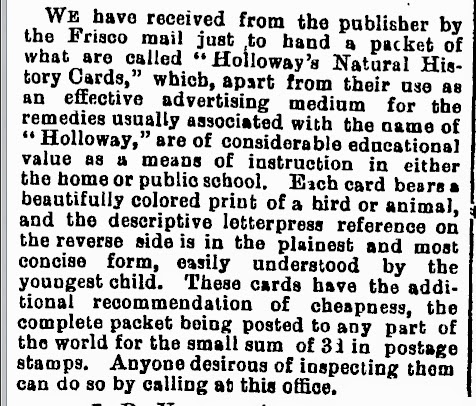 |
| Tuapeka Times, 21 March 1900, Page 2. PapersPast |
Going back to the Natural History Cards published by G. Martin, I will close with a few of my favorites from the birds and beasts sets:
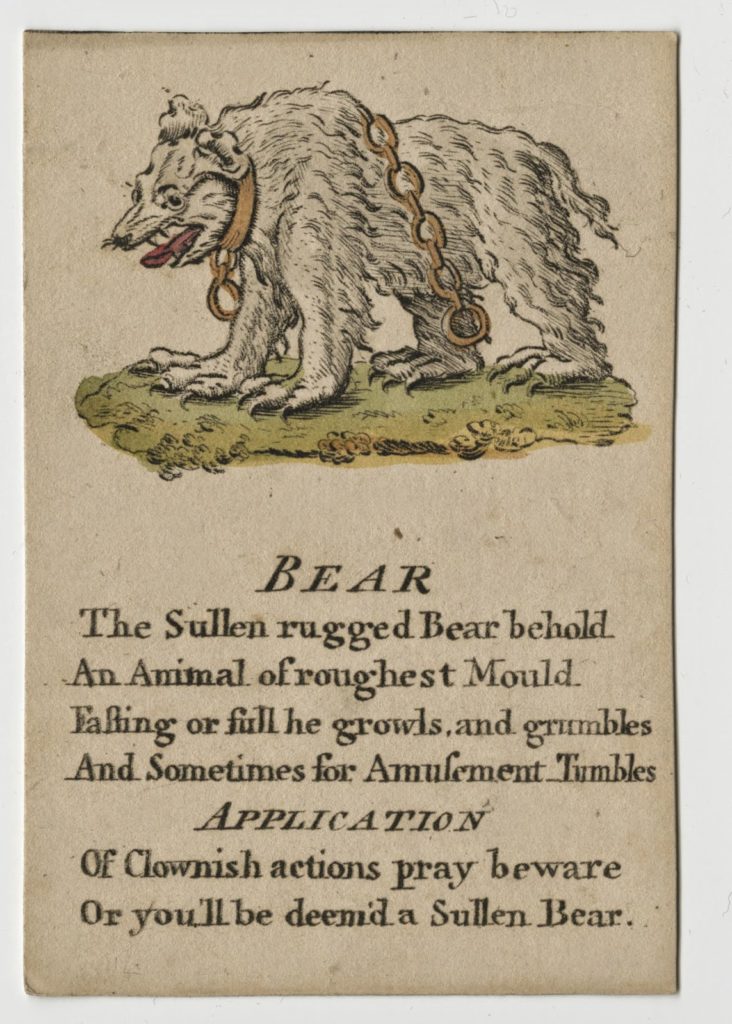 |
| Natural History Cards. Beasts. London, G. Martin, [ca. 1825]. EL3 .A1n 825a. Rosenbach of the Free Library of Philadelphia. |
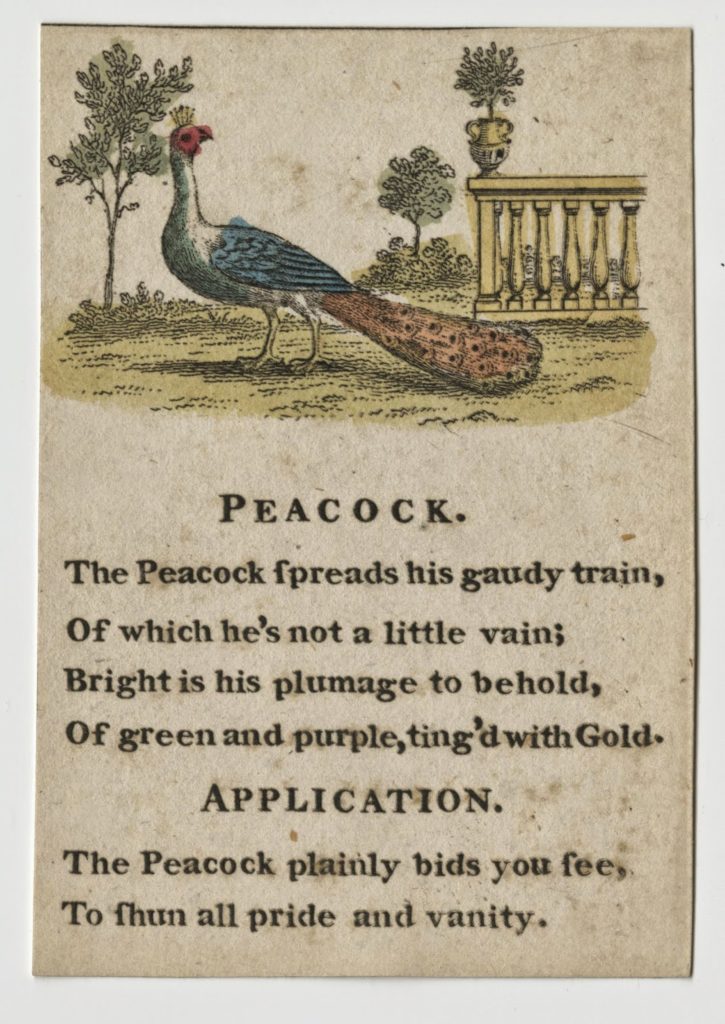 |
| Natural History Cards. Birds. London, G. Martin, [ca. 1825]. EL3 .A1n 825b. Rosenbach of the Free Library of Philadelphia. |
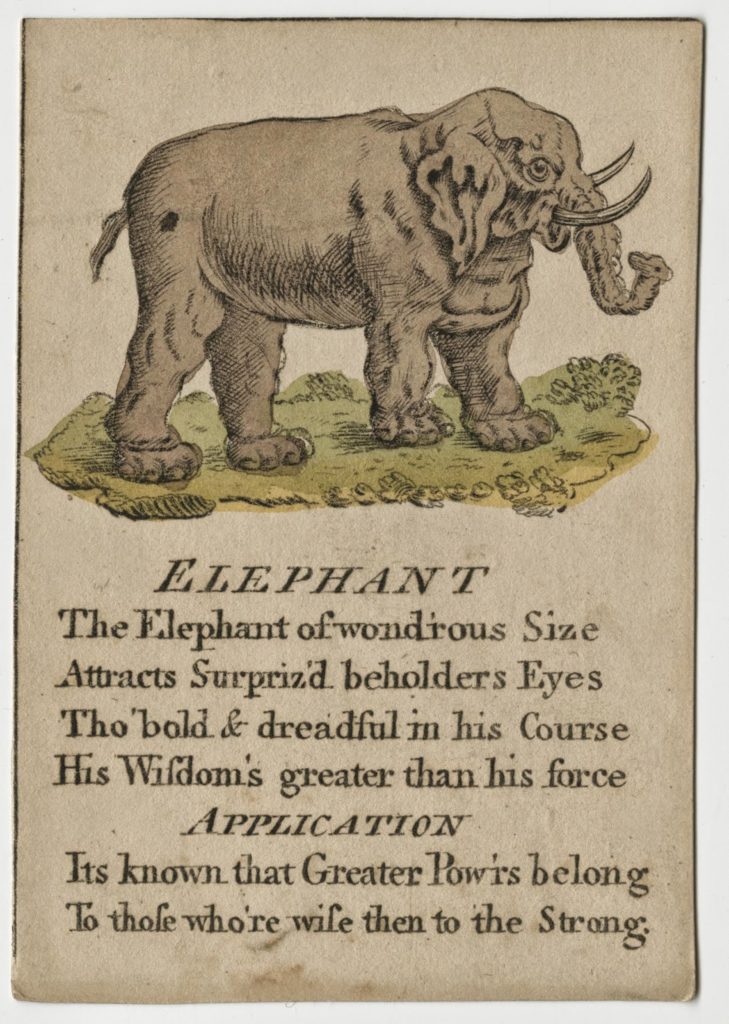 |
| Natural History Cards. Beasts. London, G. Martin, [ca. 1825]. EL3 .A1n 825a. Rosenbach of the Free Library of Philadelphia. |
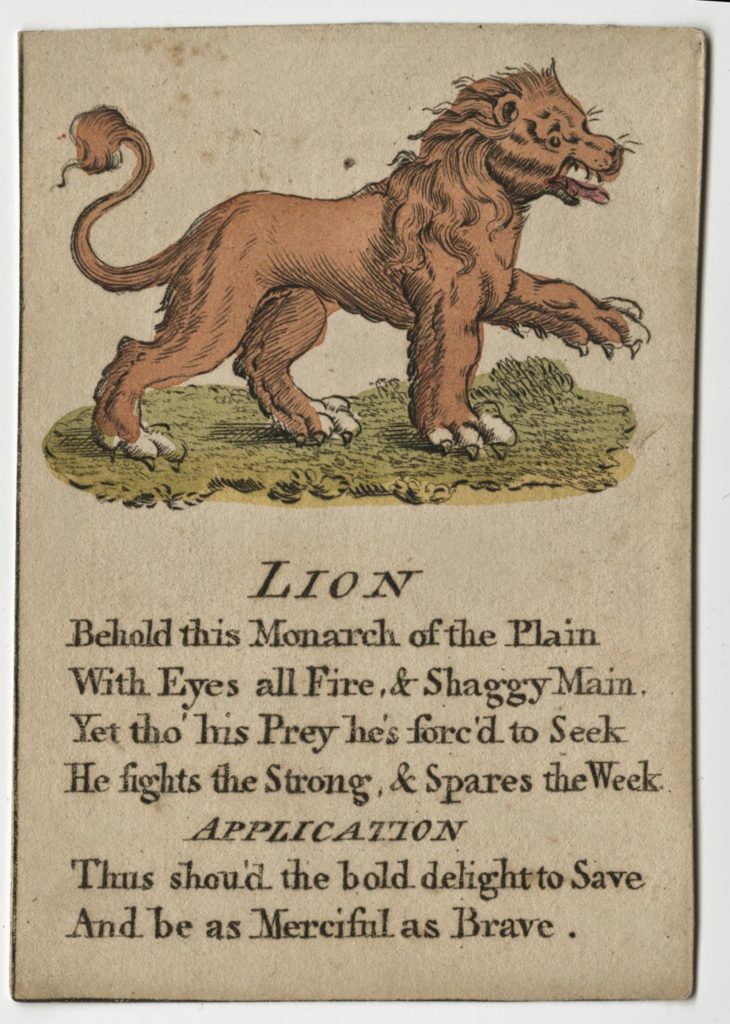 |
| Natural History Cards. Beasts. London, G. Martin, [ca. 1825]. EL3 .A1n 825a. Rosenbach of the Free Library of Philadelphia. |
 |
| Natural History Cards. Birds. London, G. Martin, [ca. 1825]. EL3 .A1n 825b. Rosenbach of the Free Library of Philadelphia. |
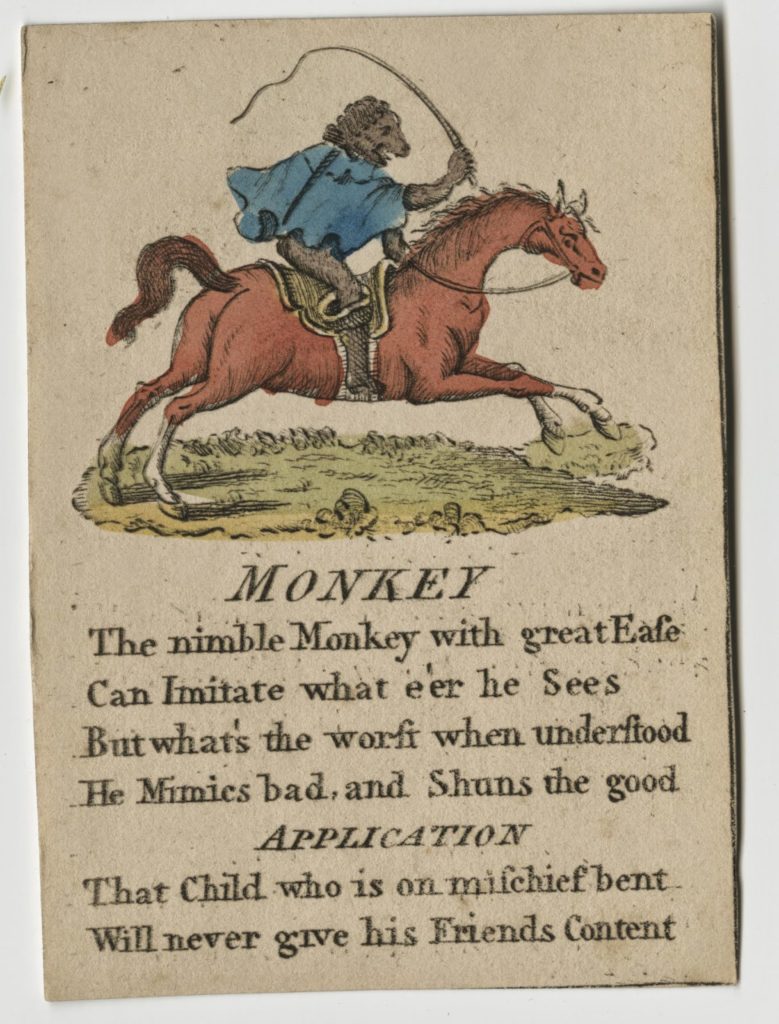 |
| Natural History Cards. Beasts. London, G. Martin, [ca. 1825]. EL3 .A1n 825a. Rosenbach of the Free Library of Philadelphia. |
 Kathy Haas is the Associate Curator at The Rosenbach of the Free Library of Philadelphia and the primary poster at the Rosen-blog.
Kathy Haas is the Associate Curator at The Rosenbach of the Free Library of Philadelphia and the primary poster at the Rosen-blog.












 Kathy Haas is the Associate Curator at The Rosenbach of the Free Library of Philadelphia and the primary poster at the Rosen-blog.
Kathy Haas is the Associate Curator at The Rosenbach of the Free Library of Philadelphia and the primary poster at the Rosen-blog.